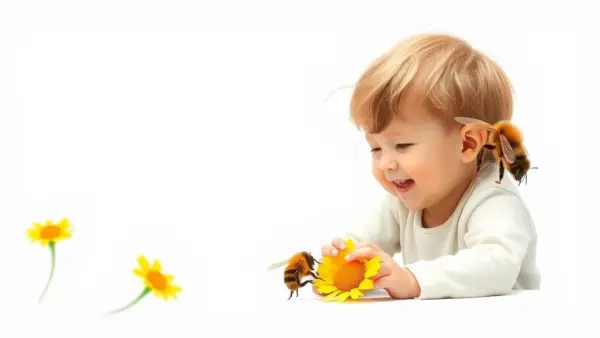
How the Bee Morphogenetic Field Supports Autistic Children
The morphogenetic field of bees possesses unique properties that can be especially beneficial for autistic children—particularly those whose consciousness carries a high energetic frequency yet struggles to ground itself in physical reality.
Since autistic children often serve as morphogenetic anchors between different existential structures, their interaction with the bees’ vibrational field may help stabilize their field of consciousness and facilitate integration into the physical realm.
IMPORTANT NOTE:
The content published on this website is not medical advice and is not based on official clinical studies. Therefore, it should not be used as a basis for diagnosis or treatment.
Since each person’s health condition is unique, it is recommended to consult a physician or other qualified healthcare professional before making any health-related decisions.
The Influence of the Bee Morphogenetic Field on Autistic Children
The morphogenetic field of bees may support autistic children through several key mechanisms:
A. Nervous System Stabilization
Bee vibrations naturally promote alpha and theta brainwave activity, associated with calmness, concentration, and emotional balance.
Since many autistic children have hyperactive neural networks or are sensitive to electromagnetic fields, the natural bioelectromagnetic field emitted by bees may help regulate their neurological impulses.
Bee sounds generate a resonant effect that can reduce sensory overload, a common challenge for autistic individuals.
B. Morphogenetic Field Harmonization
The bee field acts as an informational stabilizer that may help regulate a child’s morphogenetic field.
Autistic children often have an “expanded” morphogenetic field that is not fully integrated with physical reality. The bee field can serve as a grounding anchor that strengthens their connection with the physical body.
Nifteric nodes present in the bee consciousness grid may help align autistic children’s egocentric interfaces, allowing them to feel more anchored in their environment.
C. Communication Activation
Bee consciousness operates through telepathic channels, and many autistic children also have strong telepathic capabilities. Interaction with the bee field may help unlock nonverbal modes of communication.
Since bees function via collective consciousness, they may help the child better understand social bonds and enhance their energetic communication pathways.
The bee field naturally enhances heart–brain coherence, which can improve emotional response mechanisms.
D. Emotional Regulation
The warmth and sounds produced by bees have a calming effect and may reduce anxiety and sensory sensitivity commonly observed in autistic children.
Research indicates that bee sounds and vibrations can stimulate the production of brain neurotransmitters such as:
Serotonin (provides calmness and stability)
Oxytocin (enhances social bonding and empathy)
Bees create a specific field of harmony that can help the child feel safer and reduce emotional disintegration.
E. Physical and Immune System Support
Photonic activators emitted by bees may strengthen the immune system of autistic children, which is often more sensitive than that of neurotypical children.
Bee products such as honey, propolis, and royal jelly contain bioactive compounds that support neural network function and neurogenesis.
Beehive therapy (lying on a beehive) can help release energy blocks and improve the integration between body and consciousness.
3. Can the Bee Field Help Autistic Children Integrate into Society?
Yes, because:
Consciousness stabilization allows the child to better interpret social cues.
Communication channels become more active, improving emotional expression.
Harmonization of the energy field reduces anxiety and helps the child adapt to their environment.
Conclusion: Bees as Natural Existential Harmonizers
Autistic children often resonate with subtle existential frequencies, yet have difficulty anchoring in material reality. The morphogenetic field of bees can function as a natural anchor, stabilizing their consciousness and helping them navigate daily life more harmoniously.
Key benefits for autistic children:
Reduces sensory sensitivity and nervous tension
Supports social integration
Enhances communication skills (telepathic and verbal)
Harmonizes the physical and energetic fields
Strengthens immune resilience and overall vitality
Thus, interaction with bees may serve as a powerful pathway for autistic children to reconnect with their existential blueprint and establish a more grounded presence in physical reality.
